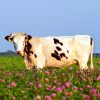Red Clover 3- 4 Year Silage Ley (AC4)
£6.71
Medium term, low input, intensive silage production with red clover.
Contents ( 1.00 kg )
- 45% PERKINS certified Hybrid Ryegrass (T)
- 35% BIJOU certified Late Per. Ryegrass (T)
- 20% GARANT certified Red Clover
Contents per acre ( 12.00 kg )
- 45% PERKINS certified Hybrid Ryegrass (T)
- 35% BIJOU certified Late Per. Ryegrass (T)
- 20% GARANT certified Red Clover
Contents per hectare ( 30.00 kg )
- 45% PERKINS certified Hybrid Ryegrass (T)
- 35% BIJOU certified Late Per. Ryegrass (T)
- 20% GARANT certified Red Clover
Contents ( 0.00 kg )
- 20% PERKINS certified Hybrid Ryegrass (T)
- 20% BIJOU certified Late Per. Ryegrass (T)
- 20% GARANT certified Red Clover



